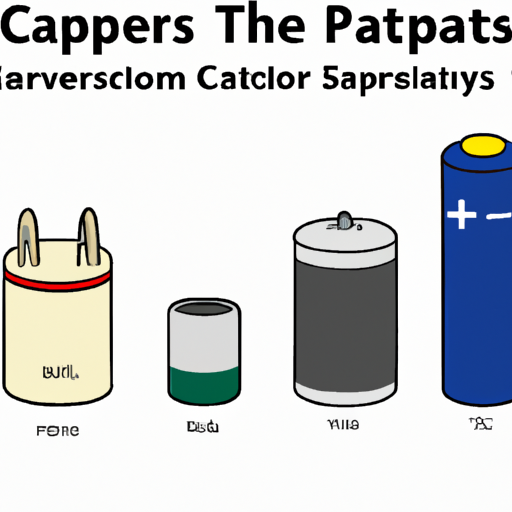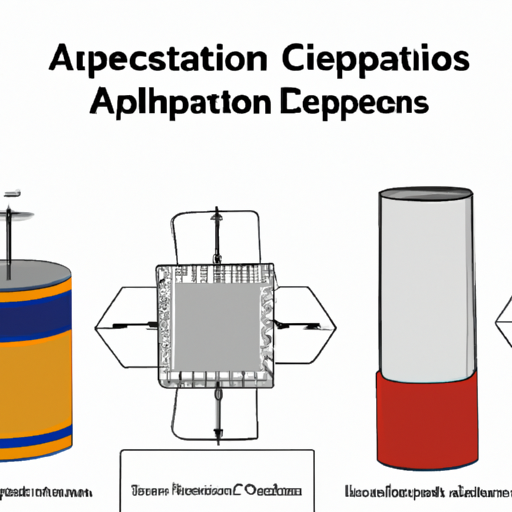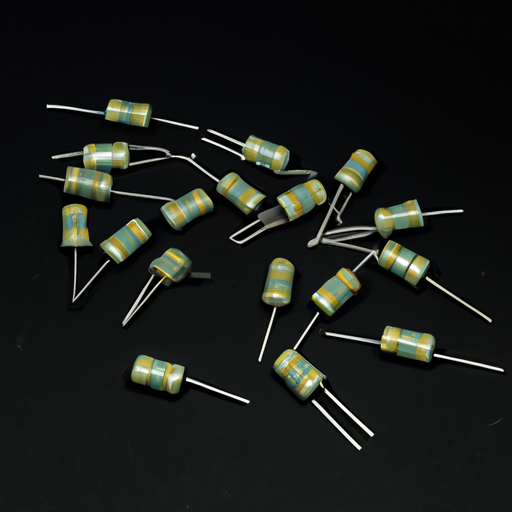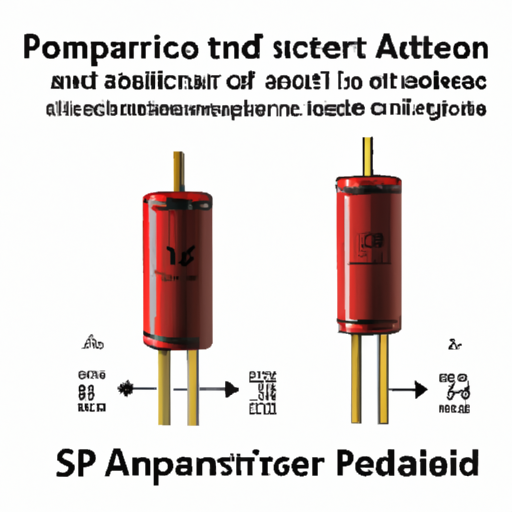What product types do capacitors include?
What Product Types Do Capacitors Include?
I. Introduction
Capacitors are fundamental components in the world of electronics, playing a crucial role in the functioning of various devices and systems. Defined as passive electrical components that store and release electrical energy, capacitors are essential for managing voltage and current in circuits. Their ability to store energy temporarily makes them invaluable in applications ranging from consumer electronics to industrial machinery. This article aims to explore the different types of capacitors, their characteristics, applications, and the future trends shaping capacitor technology.
II. Basic Principles of Capacitors
A. How Capacitors Work
Capacitors operate on the principle of storing electrical energy in an electric field. When a voltage is applied across the plates of a capacitor, an electric field is created, allowing the capacitor to store energy. The amount of energy a capacitor can store is determined by its capacitance, which is measured in farads (F). Capacitance is influenced by several factors, including the surface area of the plates, the distance between them, and the type of dielectric material used.
B. Key Components of Capacitors
1. **Dielectric Materials**: The dielectric is an insulating material placed between the plates of a capacitor. It increases the capacitor's ability to store charge by reducing the electric field strength, allowing for greater capacitance. Common dielectric materials include ceramic, plastic, and electrolytic substances.
2. **Plates and Their Arrangement**: Capacitors consist of two conductive plates separated by the dielectric material. The arrangement of these plates can vary, influencing the capacitor's performance and application.
III. Classification of Capacitors
Capacitors can be classified based on various criteria, including the dielectric material used, construction type, and application.
A. Based on Dielectric Material
1. **Ceramic Capacitors**: These capacitors use ceramic as the dielectric material. They are widely used due to their stability, reliability, and low cost. Ceramic capacitors are available in various capacitance values and voltage ratings.
2. **Electrolytic Capacitors**: Known for their high capacitance values, electrolytic capacitors use an electrolyte as the dielectric. They are polarized, meaning they must be connected in the correct direction in a circuit. These capacitors are commonly used in power supply applications.
3. **Film Capacitors**: Utilizing thin plastic films as the dielectric, film capacitors are known for their stability and low loss. They are often used in audio and high-frequency applications due to their excellent performance characteristics.
4. **Tantalum Capacitors**: These capacitors use tantalum oxide as the dielectric and are known for their small size and high capacitance. They are often used in compact electronic devices.
5. **Mica Capacitors**: Mica capacitors are known for their high precision and stability. They are often used in RF applications and high-frequency circuits.
6. **Supercapacitors**: Also known as ultracapacitors, supercapacitors have extremely high capacitance values and can store large amounts of energy. They are used in applications requiring rapid charge and discharge cycles.
B. Based on Construction Type
1. **Surface Mount Capacitors**: These capacitors are designed for surface mounting on printed circuit boards (PCBs). They are compact and suitable for automated assembly processes.
2. **Through-Hole Capacitors**: These capacitors have leads that pass through holes in a PCB. They are often used in applications where higher power handling is required.
3. **Radial and Axial Capacitors**: Radial capacitors have leads that extend from the bottom, while axial capacitors have leads on either end. The choice between these types depends on the layout and design of the circuit.
C. Based on Application
1. **Power Capacitors**: Used in power electronics, these capacitors help manage voltage and current in power supply circuits.
2. **Signal Capacitors**: These capacitors are used in signal processing applications, such as filtering and coupling.
3. **Timing Capacitors**: Timing circuits often use capacitors to create delays or control timing intervals in electronic devices.
IV. Detailed Examination of Capacitor Types
A. Ceramic Capacitors
Ceramic capacitors are characterized by their small size, low cost, and wide range of capacitance values. They are commonly used in decoupling and filtering applications. Advantages include stability over temperature and voltage, while disadvantages may include limited capacitance values and potential microphonic effects in certain applications.
B. Electrolytic Capacitors
Electrolytic capacitors are known for their high capacitance and are often used in power supply circuits. They have a polarized design, which means they must be connected correctly to avoid damage. Advantages include high capacitance values and low cost, while disadvantages include limited lifespan and sensitivity to temperature and voltage.
C. Film Capacitors
Film capacitors are known for their excellent stability and low loss characteristics. They are often used in audio applications and high-frequency circuits. Advantages include long lifespan and low self-inductance, while disadvantages may include larger size compared to other types.
D. Tantalum Capacitors
Tantalum capacitors are compact and offer high capacitance values, making them suitable for space-constrained applications. They are often used in portable electronics. Advantages include high reliability and stability, while disadvantages include higher cost and sensitivity to voltage spikes.
E. Mica Capacitors
Mica capacitors are known for their precision and stability, making them ideal for RF applications. They have low loss and high voltage ratings. Advantages include excellent temperature stability, while disadvantages may include higher cost and limited capacitance values.
F. Supercapacitors
Supercapacitors are unique in their ability to store large amounts of energy and deliver it quickly. They are used in applications requiring rapid charge and discharge cycles, such as energy storage systems. Advantages include high energy density and long cycle life, while disadvantages may include lower voltage ratings and higher cost.
V. Applications of Capacitors
Capacitors find applications across various industries, including:
A. Consumer Electronics
In consumer electronics, capacitors are used in power supplies, audio equipment, and signal processing circuits. They help stabilize voltage and filter noise, ensuring optimal performance.
B. Industrial Applications
In industrial settings, capacitors are used in motor drives, power factor correction, and energy storage systems. They play a vital role in improving energy efficiency and reliability.
C. Automotive Industry
Capacitors are used in automotive electronics for power management, signal processing, and energy storage in hybrid and electric vehicles. They help enhance performance and efficiency.
D. Renewable Energy Systems
In renewable energy systems, capacitors are used in inverters and energy storage systems to manage power flow and improve efficiency. They play a crucial role in integrating renewable energy sources into the grid.
E. Telecommunications
In telecommunications, capacitors are used in signal processing, filtering, and power supply applications. They help ensure reliable communication and data transmission.
VI. Future Trends in Capacitor Technology
A. Innovations in Materials and Design
The future of capacitor technology is likely to see innovations in materials and design, leading to higher capacitance values, smaller sizes, and improved performance. Research into new dielectric materials and manufacturing techniques is ongoing.
B. The Role of Capacitors in Emerging Technologies
As technologies such as electric vehicles, renewable energy, and IoT continue to evolve, the demand for advanced capacitors will grow. Capacitors will play a critical role in energy storage, power management, and signal processing in these applications.
C. Environmental Considerations and Sustainability
With increasing awareness of environmental issues, there is a push for sustainable capacitor technologies. This includes the development of eco-friendly materials and recycling methods to reduce waste and environmental impact.
VII. Conclusion
Capacitors are essential components in modern electronics, with a wide range of types and applications. From consumer electronics to industrial systems, their ability to store and manage electrical energy is crucial for optimal performance. As technology continues to advance, the future of capacitors looks promising, with innovations in materials, design, and sustainability paving the way for new applications and improved performance.
VIII. References
For further exploration of capacitors and their applications, consider the following resources:
1. "Capacitors: Principles and Applications" by John Smith
2. "The Art of Electronics" by Paul Horowitz and Winfield Hill
3. Industry standards and guidelines from organizations such as the Institute of Electrical and Electronics Engineers (IEEE) and the International Electrotechnical Commission (IEC).
By understanding the various types of capacitors and their applications, engineers and enthusiasts can make informed decisions when designing and implementing electronic circuits.







